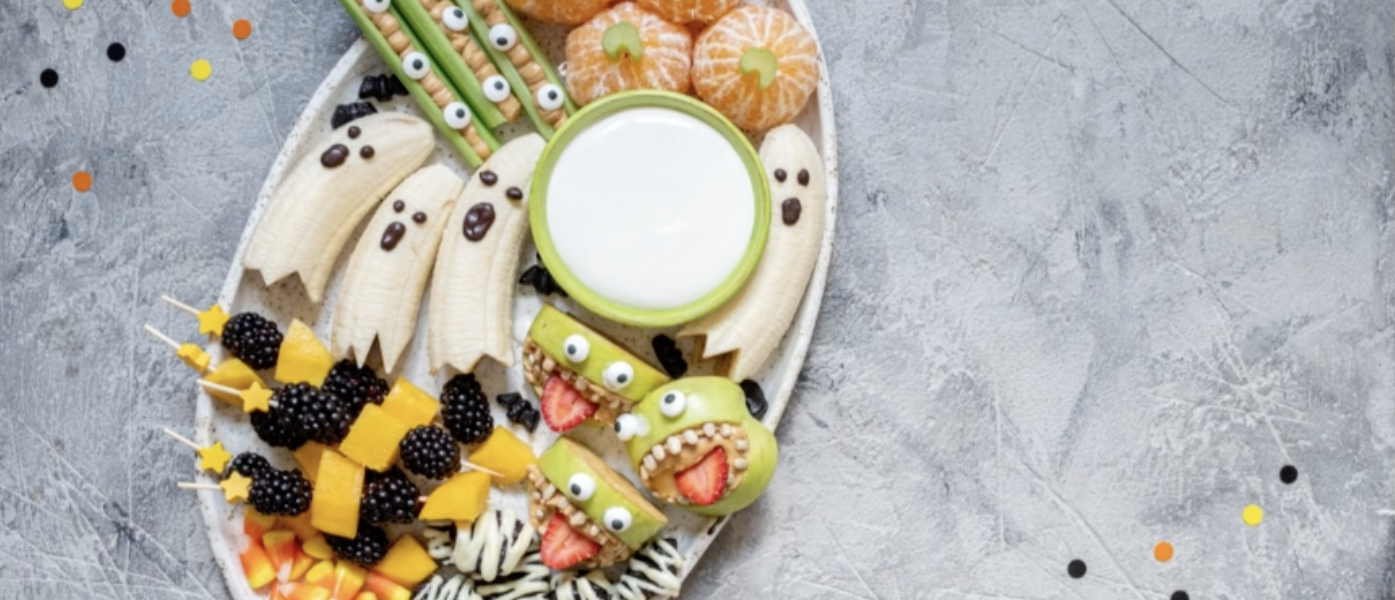With it being the week of halloween we thought what better time than to talk about the best way to treat your body without completely going overboard, but also how to trick it into thinking you are giving it treats that are less spooky for your health! No need to get spooked as we discuss how to trick your body into treats.
Let’s define “treats”
The scary thing about treats is, once they are consumed on a regular daily basis, they are no longer considered treats. According to Sanford Health, “A treat is a less nutritious option that does not fuel your body and brain as much. These foods are often disguised as ‘snacks’ in stores but are packed with extra sugar and very few nutrients (The Fit Team, 2023).” So how do we keep our treats in check, or convince our body that healthier foods that can be eaten on a regular basis are just as good as treats for cravings?
Everything in moderation
When keeping treats as treats, moderation is key! A good way to balance this out is by focusing on the good food that you are putting into your body, by eating healthy and nourishing meals you will have less cravings and find it easier to not need sugary treats on a daily basis. Some people prefer guidelines to go off for how many treats are suitable in a week, nutritionists suggest 2-3 treats a week is a good balance without overdoing it.
Trick or treat?
Now it’s time for the tricking part, which really isn’t that tricky at all. The best place to begin is to trick your body away from cravings, this can be done by stabilising your blood sugar levels to avoid sugar crashes. There are some great ways to help with this:
- Low GI foods – these have a lower glycaemic index which means the carbohydrates take longer to break down in the body, resulting in longer energy and less sugar spikes leading to crashes. Some great low GI foods to add into your eating include oats, grains, legumes, starchy vegetables, most fruits and dairy foods (Glycaemic Index Foundation, 2023).
- Adaptogen foods – these types of foods have the capacity to help the body adapt to stress, in this context it means they can help to stabilise blood sugar levels to reduce crashes and minimise cravings (Panossian & Wikman, 2010). One of our favourite adaptogens here at Hello Ginseng is ofcourse ginseng! For more information on this superfood, have a read here.
- Eating regular smaller meals can be a huge help too, as eating more regularly reduces hunger, cravings and helps to keep blood sugar levels and energy levels stable (Papakonstantinou et al., 2018).
Our next tip is, find healthy treats! We are talking about nourishing and healthy foods that are great for your health and can be consumed daily, but that you find delicious and are excited to eat! Some really common ideas for healthy treat foods include smoothies, baked oats, protein balls and homemade vegetable chips to name a few.
Eating shouldn’t be scary
Fuelling your body so that it can carry you through life shouldn’t be scary or feel like a drag. Thankfully, finding healthy and delicious meals can be exciting and just take a little imagination and research (thanks google). By adding in adaptogens and low GI foods you really can make all the difference when it comes to tricking your body into treats!
References
Glycaemic Index Foundation (2023). Swap It, accessed on 22/09/2023, <https://www.gisymbol.com/swap-it/?gad=1&gclid=Cj0KCQjw06-oBhC6ARIsAGuzdw1lapWCmRdTc2OoyORps8kLTilUtexvVNlVY5gZkc15hZo5T74QO-waAuEpEALw_wcB>
Panossian, A., & Wikman, G. (2010). Effects of Adaptogens on the Central Nervous System and the Molecular Mechanisms Associated with Their Stress-Protective Activity. Pharmaceuticals (Basel, Switzerland), 3(1), 188–224. https://doi.org/10.3390/ph3010188
Papakonstantinou, E., Kontogianni, M. D., Mitrou, P., Magriplis, E., Vassiliadi, D., Nomikos, T., Lambadiari, V., Georgousopoulou, E., & Dimitriadis, G. (2018). Effects of 6 vs 3 eucaloric meal patterns on glycaemic control and satiety in people with impaired glucose tolerance or overt type 2 diabetes: A randomized trial. Diabetes & metabolism, 44(3), 226–234. https://doi.org/10.1016/j.diabet.2018.03.008
The Fit Team, (2023). Snacks vs. Treats: What’s the difference? Sanford Health. Accessed on 21/09/2023, <https://fit.sanfordhealth.org/blog/snacks-vs-treats-whats-the-difference#:~:text=A%20treat%20is%20a%20less,sugar%20and%20very%20few%20nutrients.>




